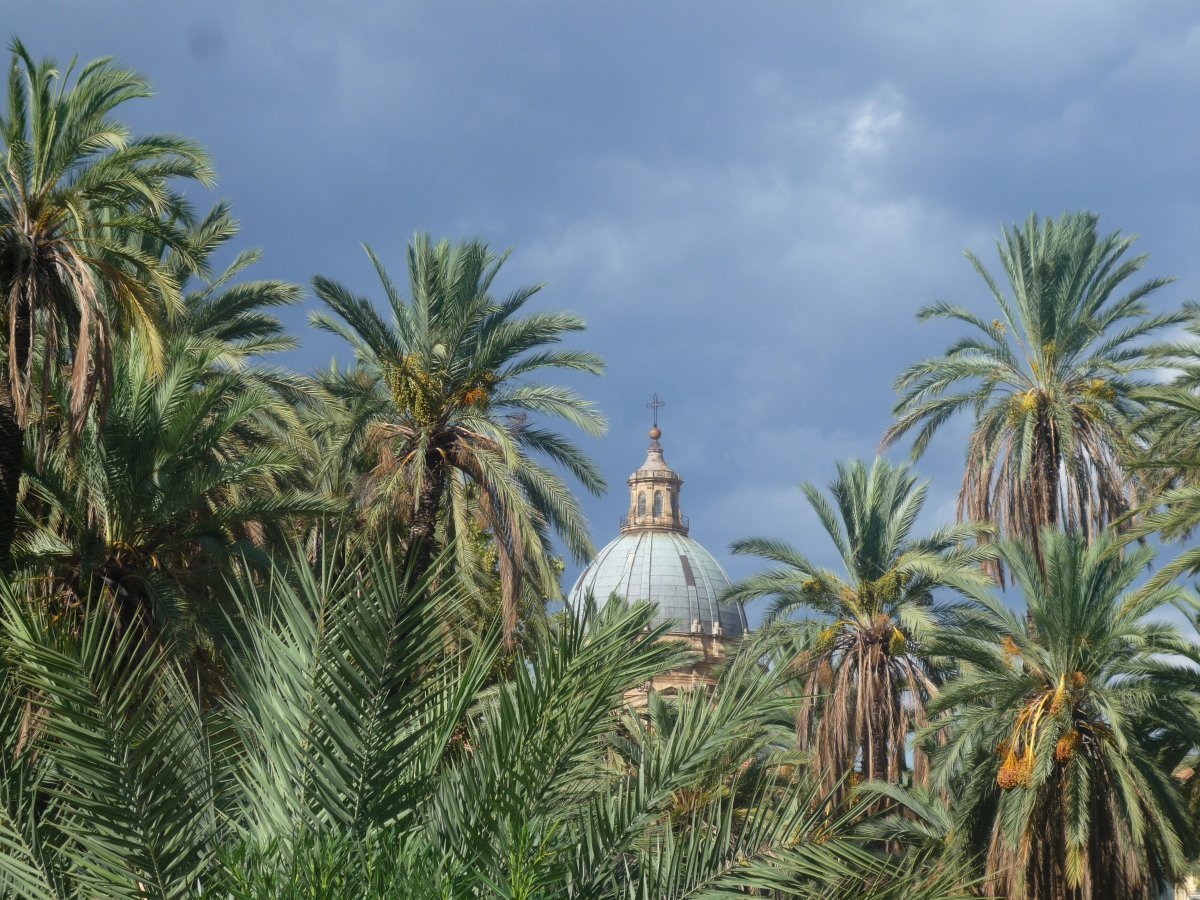
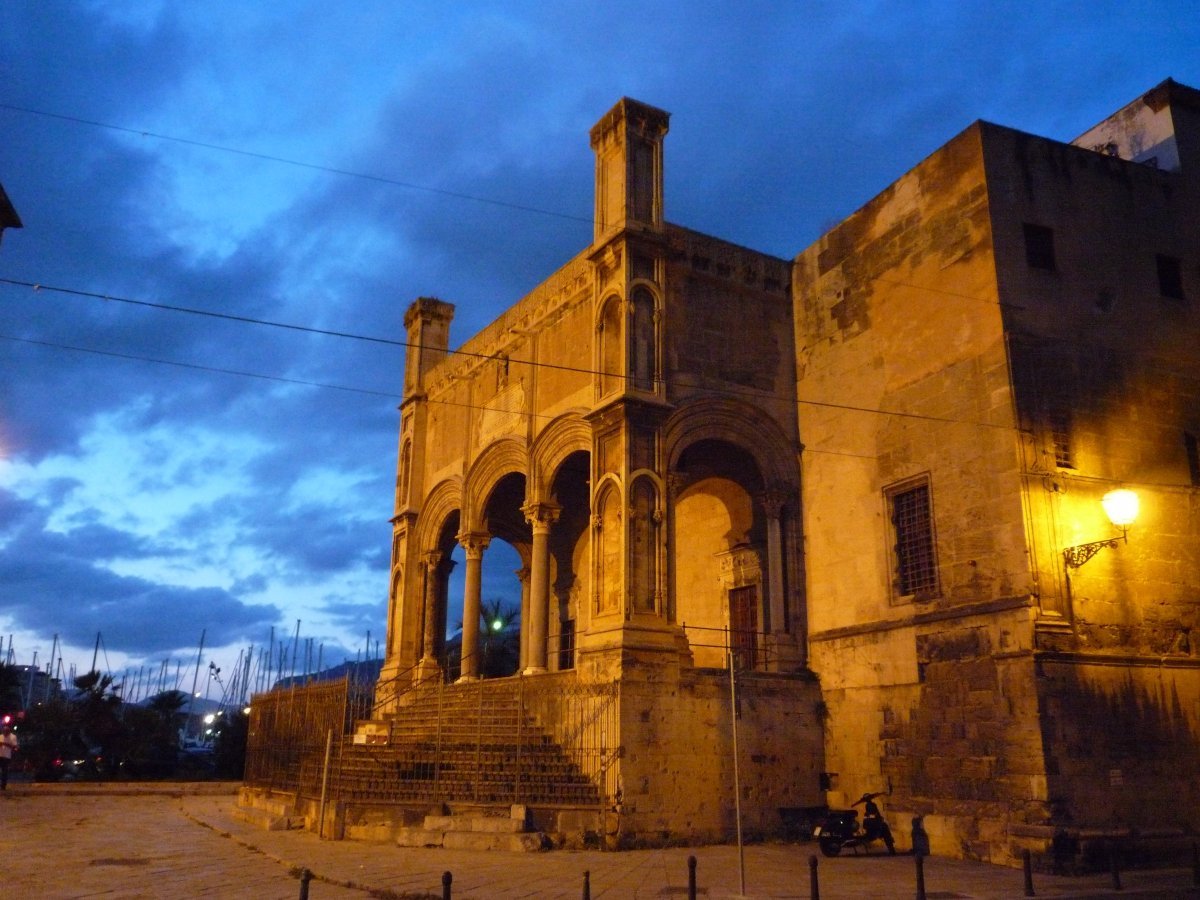
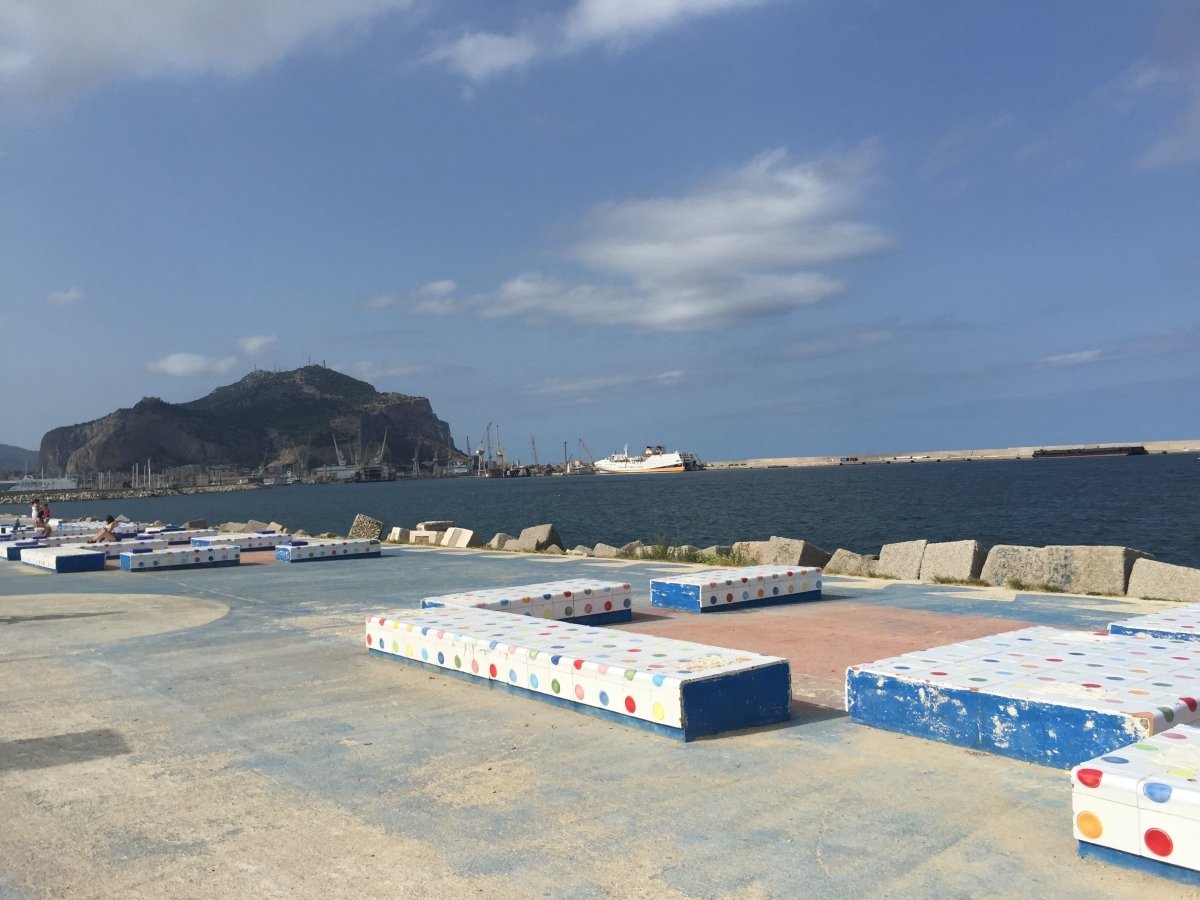



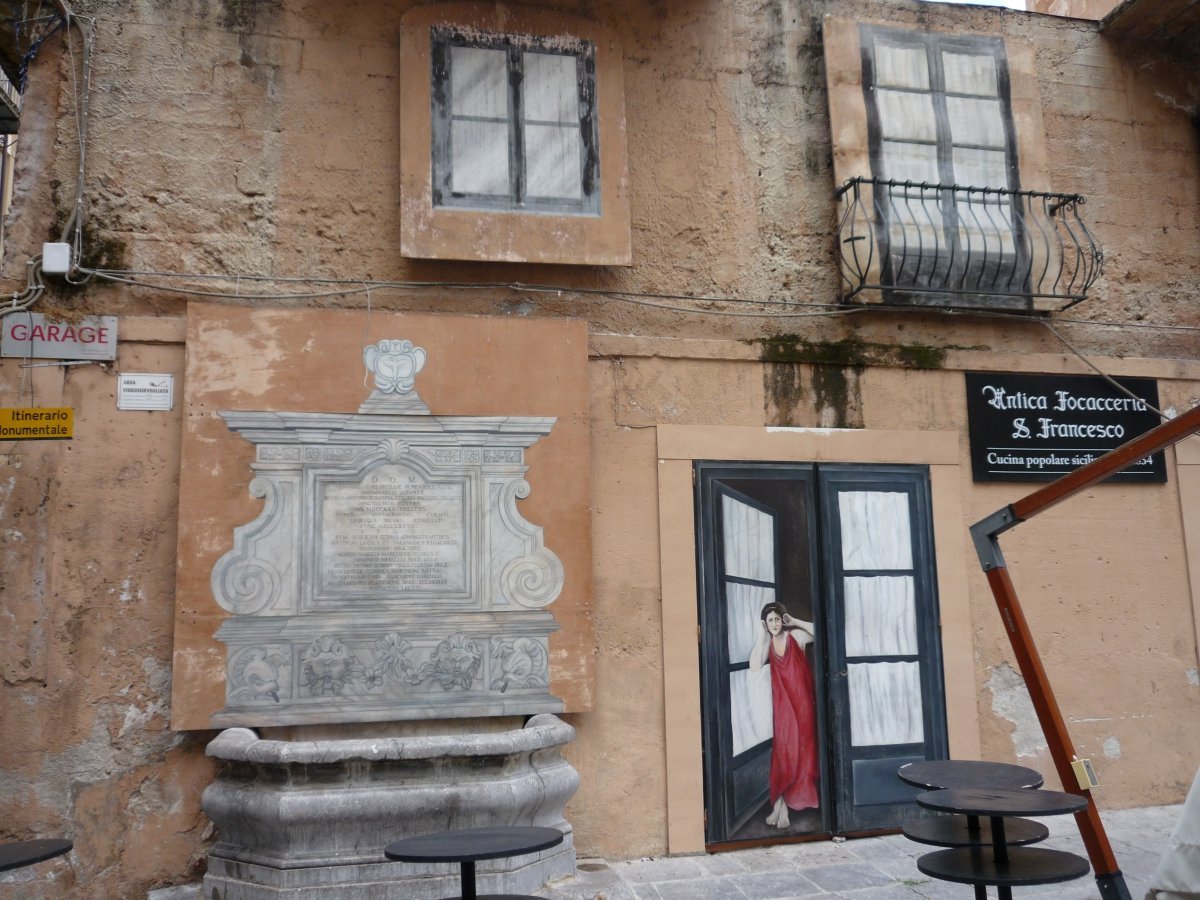
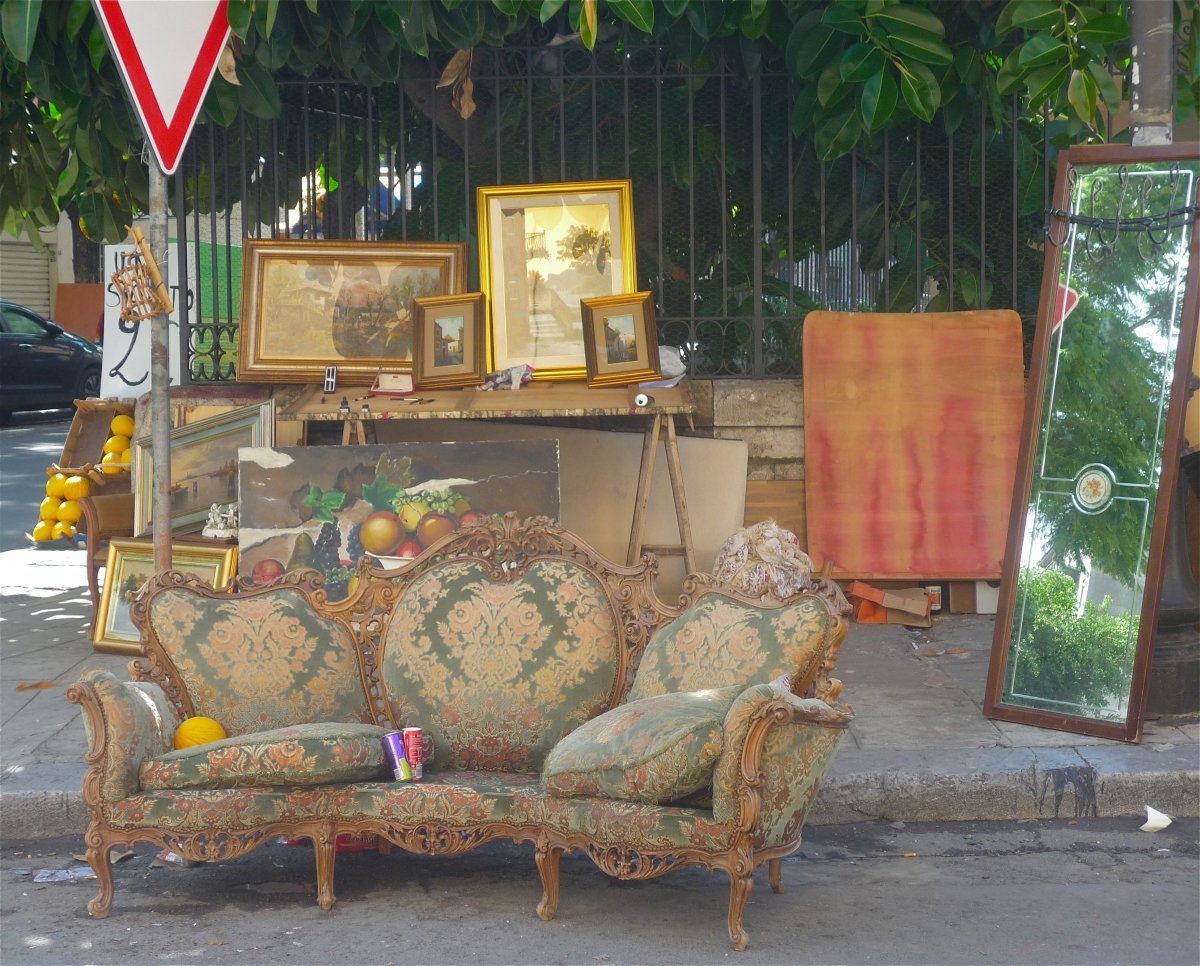

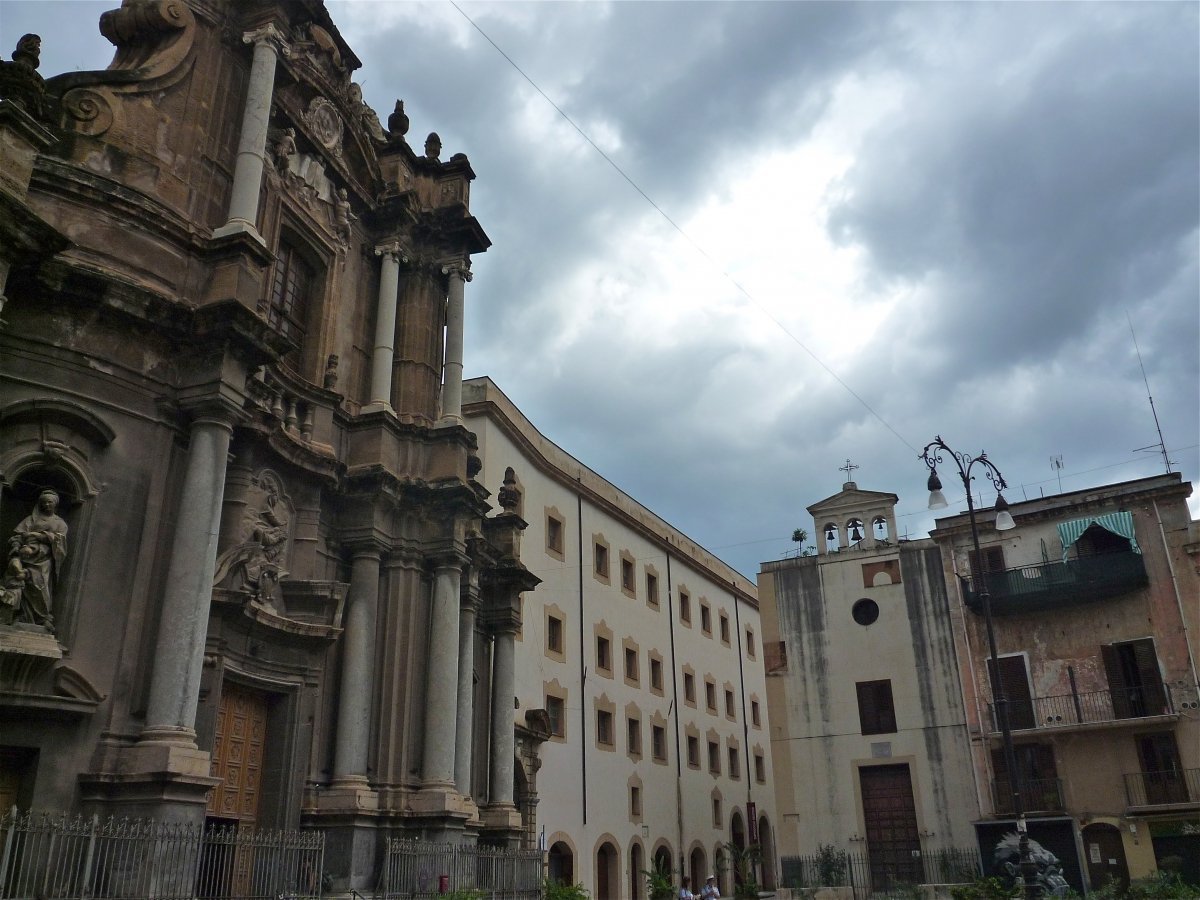
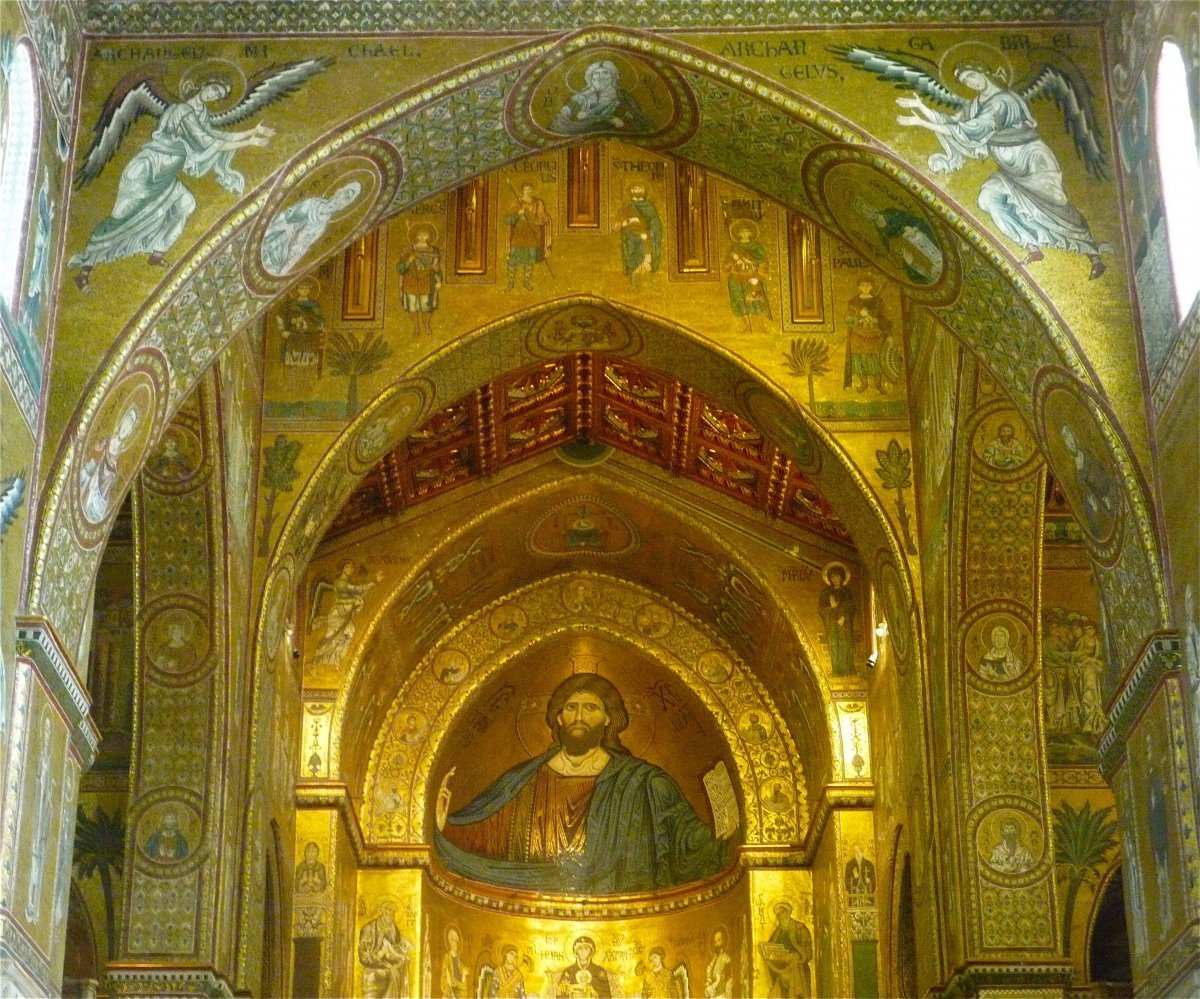
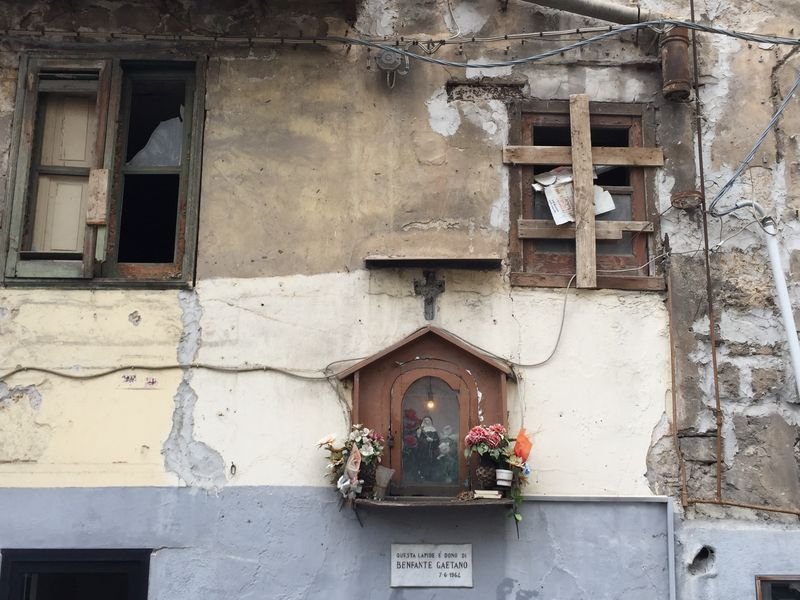
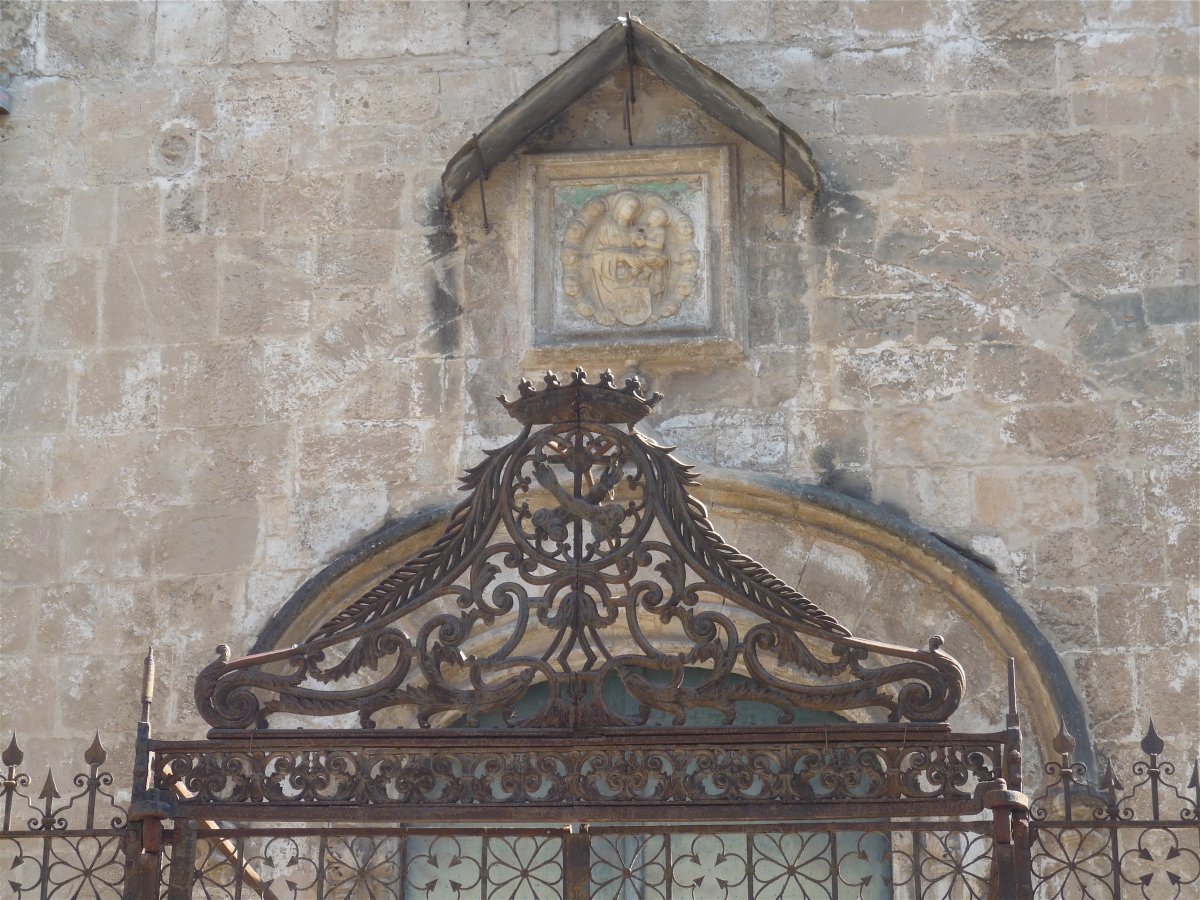

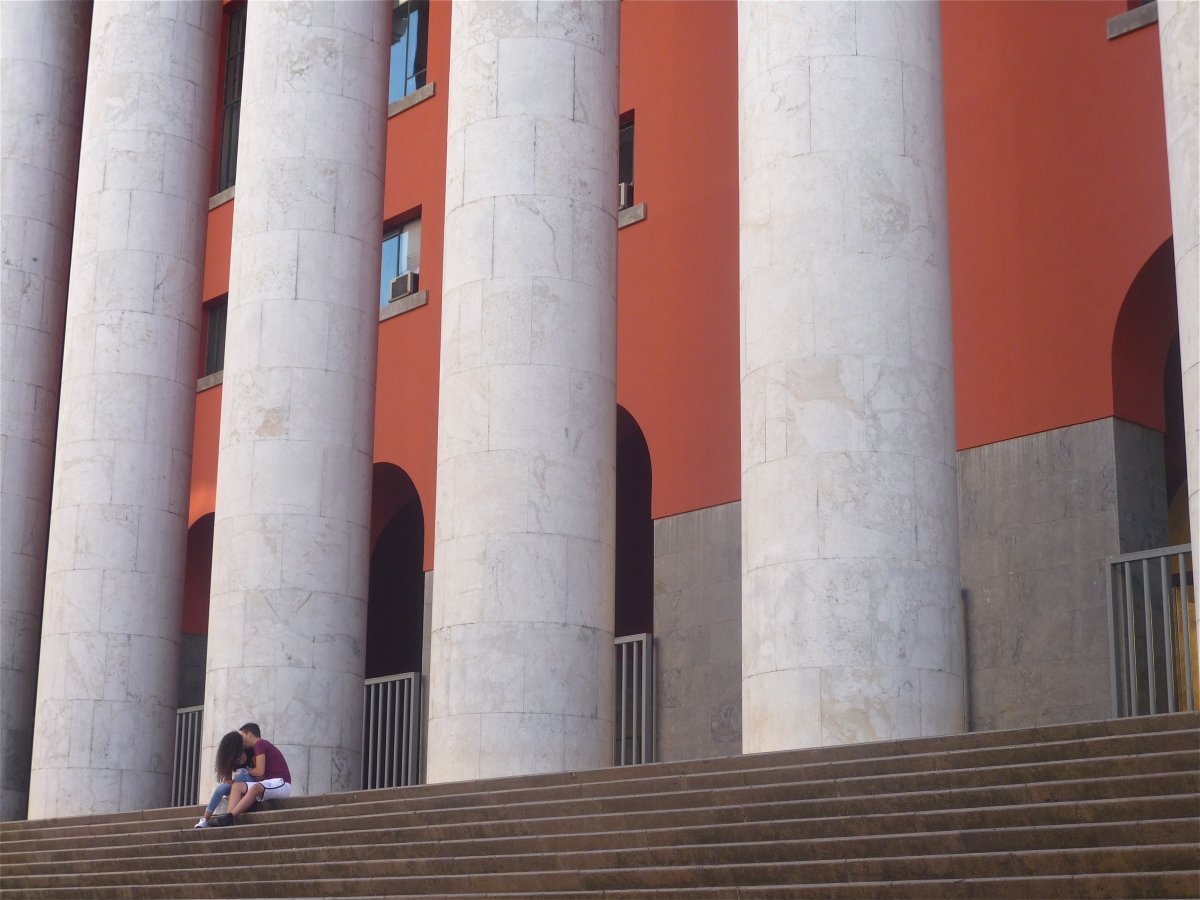
Dear Shaded Viewers,
I have a strong suspicion that Palermo, the city I chose for my yearly end-of-summer holiday, is not a physical destination but really just a hallucination. It’s said to be part of Italy but it’s more Tangier than Turin, more Ramallah than Rome. A walk around the city starting from, say, the splendid Palazzo Lanza Tomasi (the last home of the author of The Leopard, Giuseppe di Lampedusa) begins as a simple stroll before transforming into a phantasmagoric experience. Grand Arab-Norman fortresses (recently anointed as UNESCO sites) abut dilapidated buildings where only one inhabited apartment is surrounded by a burnt-out hollow shell, gauzy white curtains swaying defiantly in the breeze over a crumbling terrace precariously held up with wooden stilts. At times, the city makes Centro Habana look like Beverly Hills.
One minute you’ll be walking down a tidy alleyway bursting with jasmine bushes, the air thick with the flowers’ delightful perfume, like that of the bewitched poppies that sent Dorothy and friends into a heroin nod. (It is indeed an addictive alley.) A few minutes later you’ll be confronted with mountains of garbage spilling from armies of dumpsters, and you’ll stand and stare and exclaim “Oh my gaaahd,” just like Sandy Dennis encountering the New York City garbage strike in The Out-of-Towners.
Now turn back toward the sea—Sicily’s capital lies on the north-west coast of the island—and then try to find the sea. It’s there, somewhere, beyond piles of scrap metal and foreboding corrugated aluminum fences that seem cut-and-pasted from the Mexico-Arizona border. Finally, an oasis of verdant lawns appears and the lonely seaside promenade greets you, its desertion and odd decorative elements making a de Chirico look like a Norman Rockwell. The Mediterranean is a deep, satisfying blue; the rustling palm trees tease with the promise of tropical fiestas that never manifest.
But forget about the sea. You’re not in Miami and Mondello, the chic beach town, is only a 20-minute (which, I’m told, is more like two hours because of the traffic) bus ride away, should you need that. Head southwards instead, down the old city’s main artery, the Corso Vittorio Emanuele, an intoxicating riot of honking horns, narrow sidewalks, compelling architecture, retro storefronts and street scenes full of drama and mystery. By the time you arrive at the Quattro Canti, the city’s iconic intersection comprised of four impressive 17th-century Baroque palazzi, your head will be full of questions and your stomach will be ready for lunch—I suggest some delightfully inexpensive bucatini with pistachio sauce and stuffed swordfish rolls at Bisso, the former art-nouveau-era bookshop Libreria Dante.
Liberty legacy at Bisso
If you’re feeling flush, 14 euros will get you a plate of Palermo’s most famous dish, bucatini con sarde, at (my recommendation) Casa del Brodo. A fine example of the centuries-old Arabic influence on Sicilian cuisine, the dish is like nothing I’ve tasted elsewhere in Italy. It is a perfect composition of wild fennel, sardines, currants, pistachios, fennel seeds, pine nuts, pepper flakes and breadcrumbs. I suspect there was a pinch of saffron in there, too. (For breakfast on most days, I skipped the gelato-stuffed brioches and went straight for outsized arancini—rice balls stuffed with, in my case, sausage ragu, a recipe invented by the Arabs and brought to Sicily in the 9th century.)
Turn to the west and you’ll be on your way to Il Capo, Palermo’s oldest and most picturesque street market. Travel east and you’ll find yourself in the markets of Ballarò, denser and wilder than Capo, and redolent of North African souks. Continue south till you’re just beyond the city limits (you’ll need to walk off all that heavy food, right?) for what is arguably the world’s greatest vintage fashion show. Eight-thousand looks, from the 17th through 19th centuries, are modeled by the mummies of the Capuchin Catacombs. Elegant gowns, the handsome uniforms of the Garibaldini, haute-couture clerical vestments and baby-wear creepy chic adorn the corpses who are lined up against the walls or sprawled out elegantly in dusty coffins.
Checking out the 1864 menswear collections in the Capuchin crypts.
Capuchin cemetery
When the increasingly oppressive feeling of dread becomes too much for you, flee the airless tombs and hail a taxi to “aperitivo street” (Via Chiavettieri, if my memory serves me)—it’s time for a Negroni and all-you-can-eat snacks. And then you’ll be ready to wander the streets after dark, when the city’s phantasmagoria levels rise significantly.
On one surreal evening, I wandered down a dimly lit thoroughfare and was seduced by the smell of burning frankincense and liturgical singing. When I arrived at the entrance of a massive cathedral, I realized that the entire congregation was south Asian—and the decidedly Catholic sermon and hymns were in Hindi, complete with a Bollywood backbeat. I stood there hypnotized for several long moments before continuing my journey down several curving, cobblestoned streets, arriving at a piazza that looked like someone had recently dropped a bomb on it.
Well, yes, someone had—the Americans—but not so recently. More like 1943. While a good portion of Palermo’s historic center has been repaired and restored after suffering the ravages of WWII, it is rather astonishing to see how much of the city still bears its massive wounds from that war. Reasons range from mafia corruption to lack of funds doled-out by the Italian government. (“Northern funds sometimes are not even planned to go to the south. Yes, a lot is stolen by the mafia, but also there was a plan in Italy to keep the south poor,” my new friend Stefania, whom I had met at an opening at Francesco Pantaleone’s gallery, told me.) I had wandered into Vucciria, once Palermo’s most vibrant and famous outdoor market, now somewhat of a low-key, tired affair, at least during the day. But at night, this is the place to be, and most of the action is centered around Palermo’s most celebrated dive bar. Situated at the foot of a dark street littered with mountains of busted-up wooden carts and rotting vegetables, Taverna Azzurra is so perfect in its divey-ness and crowd mix, it should join those Norman palaces in UNESCO-protected status.
“Uh-oh, look out, doll!” I warned my friend Nicole during a subsequent visit there. “That old guy is super-drunk and splashing his marsala at those hipsters standing by the door.” Sploosh, and the one-euro-per-cup wine almost doused one of the many large dogs running around the place. One of the dog owners, who was just as soused as the other guy, “explained” to me what was happening, over and over in slurred Sicilian. “This is really my kind of place!” I enthused as I sipped from my plastic flute of one-euro prosecco, which was surprisingly not as rot-gutty as one would expect. (Nothing will ever be as bad as the free midnight “champagne” served at CBGBs on New Year’s Eve when the Lunachicks played.)
Nicole tipped our charming lazy-eyed bartender, Nino, a euro and he rewarded us with a flight of sweet wines, served from upturned jugs that were lined up like wonky water coolers behind the bar. And then it was time for dinner, served al fresco across the street from the bar: the most divine pork-loin sandwich, with sautéed onions, peppers and hot sauce, cooked up fresh in a cart. This supreme example of Palermo street food was heartily recommended by a handsome Sicilian psychotherapist named Salvadore, a regular at Taverna Azzura. “I have to leave in 30 minutes,” he told us. “I have several appointments with patients, some via Skype.” That must be the Palmeritan therapy schedule: Princess Licy, a psychologist who was an acolyte of Sigmund Freud and the wife of Giuseppe di Lampedusa, was also in the habit of seeing her patients in the evening.
Nicole brings some Pucci realness to the dive-bar proceedings.
Palermo street food par excellence. Skip the city’s ubiquitous spleen sandwiches and go for this pork loin instead. Let’s hope Anthony Bourdain doesn’t shanghai this guy into working at his street-food market in New York—the dive bar needs him!
By now, the scene outside our favorite dive bar was at its celebratory peak: tattooed young ‘uns swayed to the Talking Heads and Queen, Tunisian stoners were lighting up and getting high, the oldsters were getting more blotto, and the (well-behaved) dogs were roaming the crowd or napping under benches. Street vendors with oysters the size of Frisbees, piled high on precarious ice hills, set up shop in dark corners surrounded by mounds of bomb-blasted rubble. It was an exquisite tableau of lawlessness, and you couldn’t imagine being anywhere else.
Some days later, or maybe before—a week in Palermo becomes a halcyon blur—the Duchess of Palma was holding forth in her ballroom at the Palazzo Lanza Tomasi. “When I moved here in the early ‘80s, I thought this area was a movie set. It looked like Beirut,” she explained. “The other side of the street was in ruins.” She then somberly related the tale of General Patton’s aerial raids on Palermo, and the departing planes whose pilots dropped excess shells at random to save gas on the flight back to their base. Palazzo Lampedusa, located outside of the city, lay in ruins. Giuseppe Lampedusa, forced from his beloved home, moved to the Palazzo Lanzi Tomasi in 1948. When the Duke of Palma moved in decades later, the property had 40 or so different owners and was in varying states of disrepair. Over time, he bought out the owners (including a witch who lived in the garage with a fleet of enchanted toads) and today the Palazzo is beautifully restored, with apartments for rent (I stayed in #6) and a cooking class conducted by the Duchess (more on that in my next report.)
The Duchess of Palma, Nicoletta Polo Lanza Tomasi
After listening to the Duchess’ stories, it was time for another stroll down that jasmine-saturated alley—and onwards to whatever mysteries awaited in the dark, gritty streets. There are plenty of pristine, predictable cities in Europe. One comes to Palermo to be surprised, mystified, occasionally repulsed—but never bored.
Love,
Glenn Belverio
The view from Bar Bruno, home of the world’s best coffee.
Entrance to Butera28 Apartments in the Palazzo Lanza Tomasi.
Neighborhood bike shop.
The cathedral in nearby Monreale.
